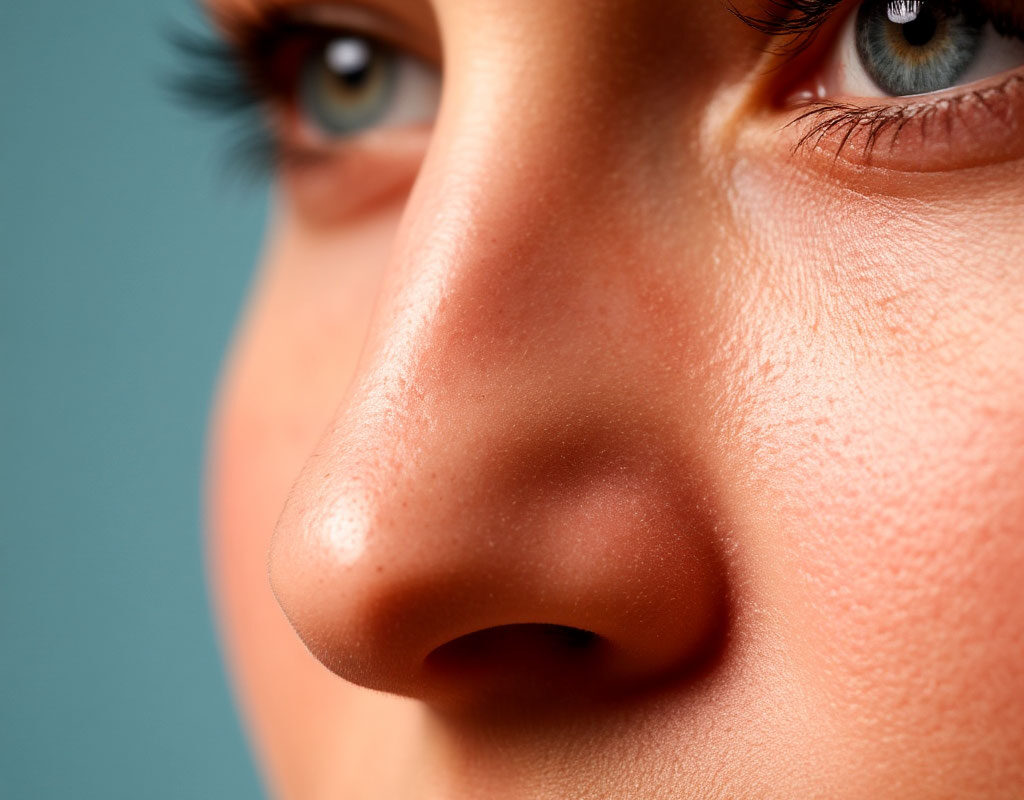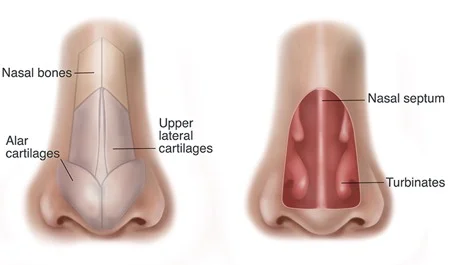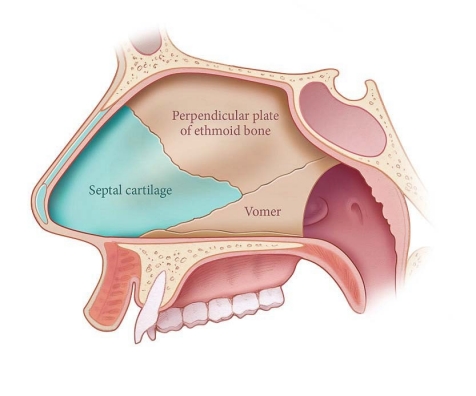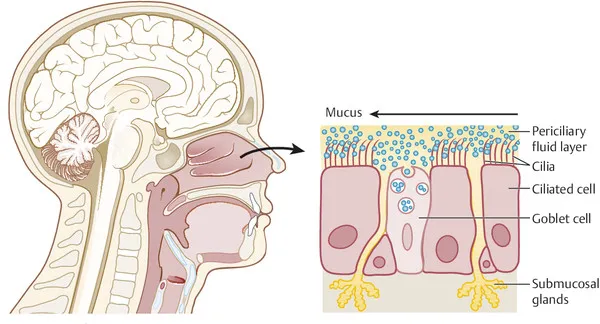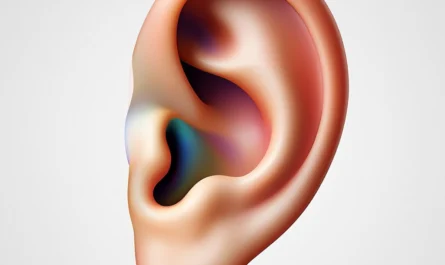Your nose does a lot more than sit in the middle of your face. Nose anatomy includes both external features and intricate internal structures that work together to support vital functions. Made up of bone, cartilage, soft tissue, and specialized linings, the nose helps you breathe, smell, and stay healthy. It filters and warms incoming air, traps harmful particles, and houses olfactory receptors that allow you to detect thousands of scents. How it’s built, what it does, and why it’s more important than you might think?
What the Nose Is Made Of: External and Internal Structures
Your nose has two parts: the outside bit you see in the mirror and the inside machinery you don’t. The external nose is that visible triangle—skin, cartilage, and a bit of bone. The bridge is made of nasal bones, giving it structure. Below that, flexible cartilage shapes the tip and nostrils. It’s like a sturdy frame wrapped in soft tissue. Blood vessels and nerves run through it, keeping it sensitive.
Inside, things get wilder. The nose’s interior is a hollow space behind your nostrils. It’s lined with a sticky layer called the mucosa, or nasal lining, which traps dirt and germs. Tiny hair-like structures, called cilia, wiggle to move that gunk out. The cavity splits into two passages, thanks to a divider we’ll talk about later. This setup helps air flow smoothly.
The Role of Cartilage and Bone
The nose’s outer shape comes from a mix of bone and cartilage. Nasal bones form the upper third, connecting to your skull. They’re tough but can break if you take a hit. Cartilage handles the lower two-thirds, giving flexibility. This combo lets your nose hold its shape while bending a bit under pressure. Notice how you can wiggle the tip? That’s the cartilage at work.
Sinuses: The Hidden Chambers
Your sinuses are air-filled pockets around the nose. They sit in your cheeks, forehead, and between your eyes. These spaces lighten your skull and add resonance to your voice. They produce mucus that drains into the nose. When you’re stuffed up, those sinuses can feel like they’re throwing a party you weren’t invited to. Their job ties into how the nose cleans and warms air, which we’ll cover soon.
The Nasal Septum and Its Functions
The nasal septum is like the wall splitting your nose into two lanes. It’s made of cartilage in front and bone in the back. Ideally, it’s straight, dividing the nose’s interior into equal halves. Each side has its own airflow, which helps the nose process air efficiently. A straight septum keeps breathing smooth and balanced.
But not every septum is perfect. A deviated septum—when it’s crooked—can mess with breathing. It might make you snore or get sinus infections. Here’s what the septum does:
- Divides airflow. It splits the nasal cavity so each nostril works independently.
- Supports structure. It holds up the nose’s shape, keeping it from collapsing.
- Guides mucus. It helps direct mucus flow to clear out junk.
- Balances pressure. It evens out air pressure between the two sides.
A funky septum can cause trouble, but surgery can fix it. Most people don’t notice their septum unless it’s off-kilter.
When the Septum Goes Rogue
A deviated septum happens when the wall leans too far one way. It’s common—about 80% of people have some degree of deviation. You might get headaches, noisy breathing, or infections. In bad cases, it blocks one nostril, making you rely on the other. Doctors can spot it with a quick look or a scan. If it’s messing with your life, a procedure called septoplasty can straighten it out.
Smell: How the Olfactory System Works
Your nose is your scent detective. The olfactory receptors in the nasal cavity make it possible to sniff out pizza or fresh flowers. These receptors are tucked high up in the nose, in a patch of tissue called the olfactory epithelium. When you inhale, odor molecules hit this spot. The receptors grab them and send signals to your brain. Your brain then says, “Hey, that’s coffee!”
Here’s a quick breakdown of the process:
| Step | What Happens |
| Inhalation | Air carrying odor molecules enters the nasal cavity. |
| Detection | Olfactory receptors bind to those molecules. |
| Signal | Nerves send the info to the olfactory bulb in your brain. |
| Processing | Your brain identifies the smell and links it to memories. |
This system is crazy sensitive. You can detect thousands of smells, from rain to burnt toast. The olfactory bulb ties smells to emotions, which is why a whiff of perfume can bring back memories.
Why Smells Hit You Hard
The olfactory system is wired straight to your brain’s emotion center. Unlike sight or sound, smells skip a few steps and go right to the amygdala. That’s why a certain scent can make you feel nostalgic or grossed out instantly. Olfactory receptors don’t just detect smells—they help you react to them. Losing your sense of smell, like from a cold, can make food taste bland. It’s a bigger deal than you’d think.
What Happens When Smell Fails
Sometimes the olfactory system glitches. Colds, allergies, or injuries can knock out your olfactory receptors. A condition called anosmia means you can’t smell at all. It’s rare but can mess with your appetite or even safety—imagine not smelling smoke. Aging can dull your sense of smell. Keeping your nasal lining healthy with hydration and avoiding irritants helps protect those receptors.
How the Nose Warms and Cleans the Air
Your nose is like a personal air purifier. It’s built for air filtration, cleaning and warming every breath. The nasal lining and its mucus layer trap dust, pollen, and germs. Those tiny cilia we mentioned? They sweep the gunk toward your throat, where you swallow or cough it out. It’s gross but effective.
The nose warms and humidifies air. Blood vessels in the nasal cavity heat cold air to body temperature. The nasal lining adds moisture to keep your lungs from drying out. This process keeps your airways happy. Here’s what your nose does for every breath:
- Traps particles with mucus.
- Sweeps out debris with cilia.
- Warms air with blood vessels.
- Adds moisture to prevent dryness.
This teamwork stops junk from reaching your lungs. It’s why breathing through your nose feels better than through your mouth.
The Power of Mucus
Mucus gets a bad rap, but it’s a hero. The nasal lining produces about a quart of it daily. It’s sticky enough to catch dust and germs but thin enough to move along. Cilia act like tiny brooms, pushing it out. When you’re sick, mucus ramps up to fight invaders. That’s why you get a runny nose—it’s your nose working overtime.
How Sinuses Pitch In
Sinuses are more than empty spaces. They help with air filtration by producing extra mucus. They lighten your head, so it’s not too heavy to carry around. When sinuses get blocked, you feel pressure or pain. Keeping them clear with hydration or steam can make breathing easier. Your nose and sinuses are like a tag team for clean air.
Why Nasal Breathing Is So Important
Breathing through your nose isn’t only convenient—it’s a health booster. Nasal breathing filters, warms, and humidifies air, unlike mouth breathing. It helps with air exchange, getting oxygen to your lungs efficiently. Nose breathing triggers nitric oxide production, which opens blood vessels and boosts oxygen flow. This can lower blood pressure and calm your nervous system.
Mouth breathing skips all that. It lets in unfiltered air, dries out your throat, and can mess with your oxygen levels. Nasal breathing shapes your face as you grow—kids who breathe through their nose tend to have better jawlines. It’s a small habit with big perks.
Nasal Breathing and Your Body
Nasal breathing syncs with your body’s rhythm. It slows your heart rate and helps you relax. Athletes use it to control their breath during exercise. It keeps your lungs cleaner, cutting the risk of infections. Switching to nasal breathing takes practice if you’re a mouth breather. Try taping your mouth shut at night—sounds weird, but it works.
The Link to Sleep and Snoring
Nasal breathing cuts down on snoring. A clear nasal cavity lets air flow smoothly, reducing vibrations in your throat. A blocked nose or deviated nasal septum can make you snore like a chainsaw. Fixing nasal issues, like allergies or a crooked septum, can quiet things down. Better sleep means a sharper brain and happier days.

Myths and Facts About the Human Nose
The nose gets a lot of weird rumors. Let’s clear some up. Myth: Picking your nose makes it bigger. Nope—your nose’s size is set by genetics and cartilage. Picking might irritate the nasal lining, but it won’t reshape things. Fact: Your nose keeps growing as you age. Cartilage softens, and gravity pulls it down, making it look bigger.
Another myth: You can’t smell when you’re asleep. Wrong—your olfactory receptors work, though your brain might ignore faint smells. Fact: Your nose can “learn” smells. The more you’re around a scent, the better you recognize it. That’s why bakers don’t notice bread smells all day. The nose is full of surprises.
Busting the Sneeze Myth
People say sneezing means someone’s talking about you. Cute, but false. Sneezing is your nose kicking out irritants like dust or pollen. It’s a reflex to protect the nasal cavity. Holding in a sneeze can hurt your ears or sinuses. Cover your mouth to keep the germs in check.
The Nose and Personality Myths
Some folks think nose shape says something about personality. Big nose, bold character? Small nose, shy? Total nonsense. Your nose’s shape comes from genes, not your vibe. But a healthy nose keeps you feeling good, which might make you seem more confident. Focus on keeping your nasal lining clear, and you’ll be smiling either way.
Your nose is a multitasking marvel. From the nasal septum splitting airflow to olfactory receptors decoding smells, every part has a job. The air in the nasal cavity is filtered and warmed, and the nasal lining retains harmful substances, maintaining your health. Nasal breathing boosts your body and brain, and air filtration protects your lungs. The sinuses play a role in air exchange. Understanding nose anatomy shows how this small organ does big things. The next time you take a deep breath or smell a flower, remember your respiratory system. It works harder than you think.
